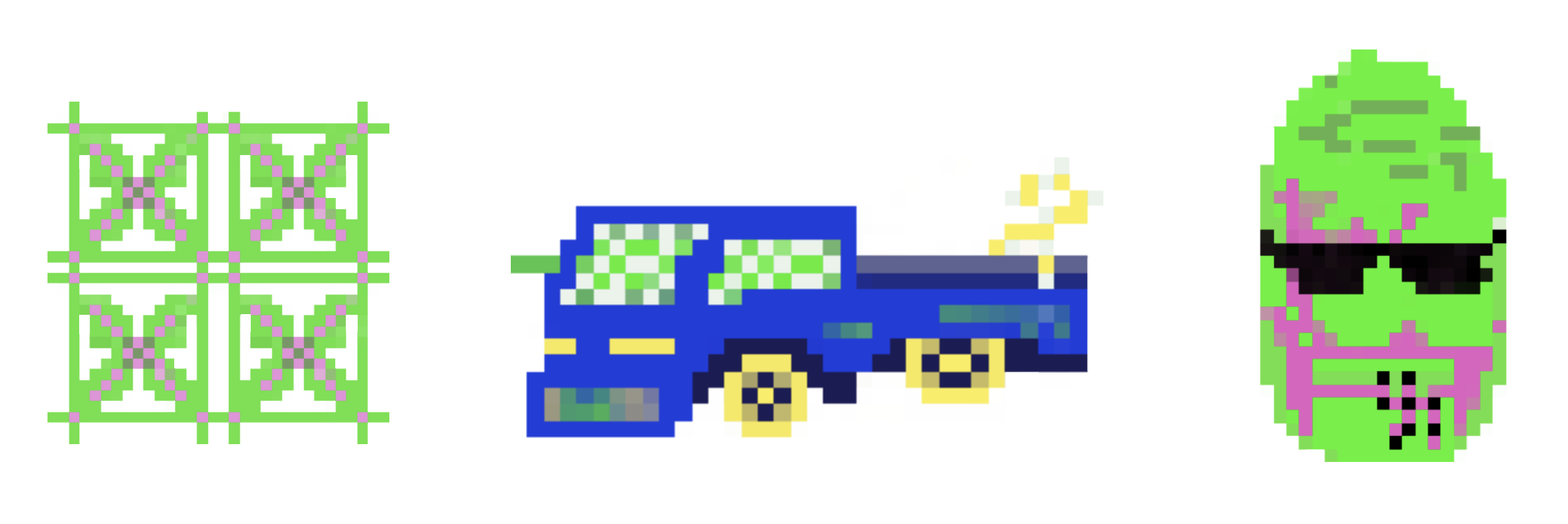Taiwan Gosepel —
Mundane and Vernacular
view the book (PDF) ︎
“For as long as I can remember, I have been helplessly engrossed with the look of things, whether a ketchup bottle or a temple, a woman or a car….” (Stephen Bayley)
If we are able to retrieve the broken connection of our vernacular history, what form would our cultural identity take? Unlike other countries with more refined soft cultural exports, we have yet to polish and set in stone our own version. Taiwanese history contains a multitude of changing colonial powers, dyeing our cultural fabric with Dutch orange, Qing dynasty yellow, and Imperial Japanese Red all upon an ancient cloth of indigenous patterns. Understanding our complex heritage will bridge the connection to our past, defining the cultural context of Taiwanese aesthetic identity. As a designer, I want to build a structure to explore color schemes, image patterns, atmospheres, and rhythms that unify our visual identity.
view the website:︎
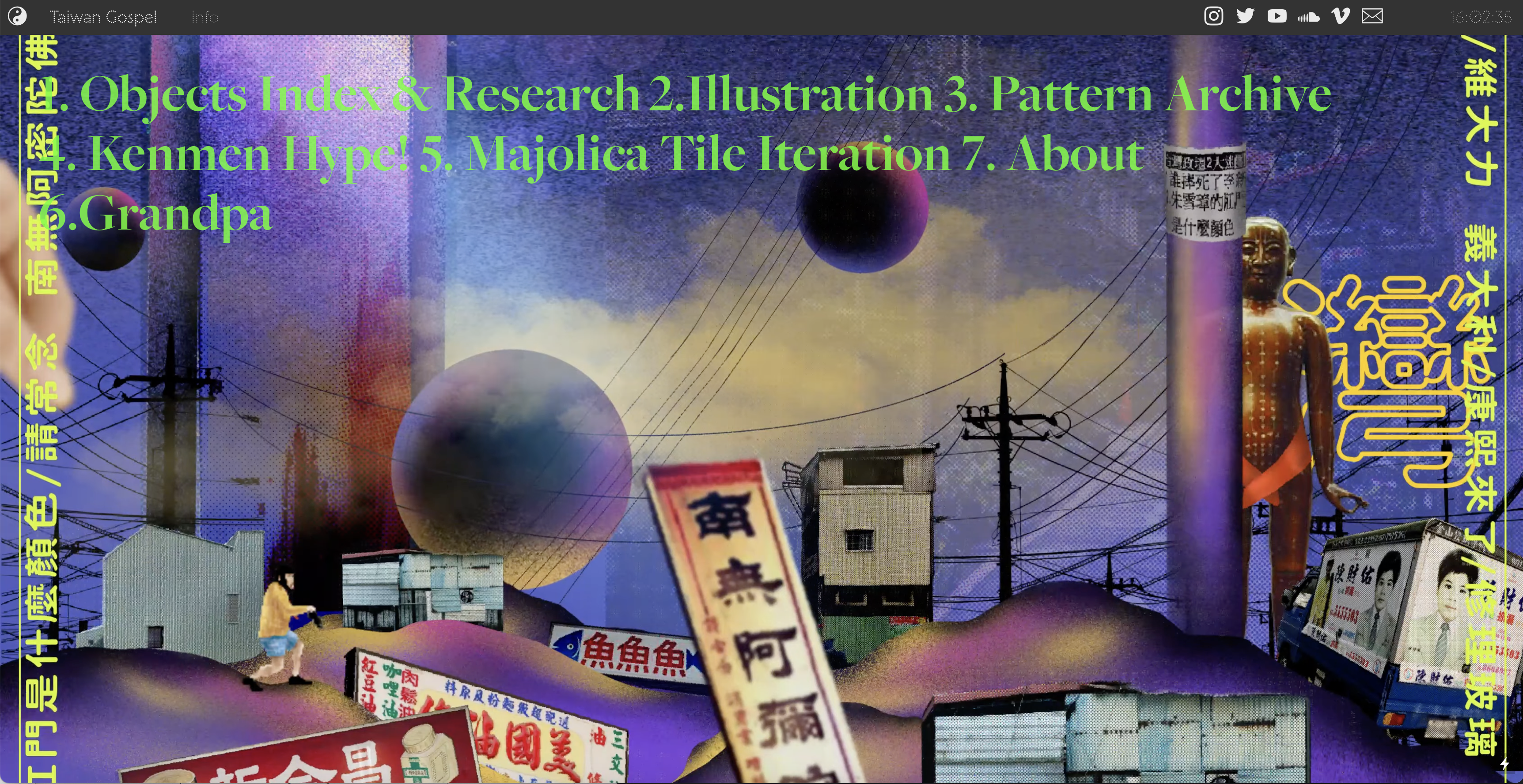
Designer Statement:


Table of contents:

Leslie Sun Q&A


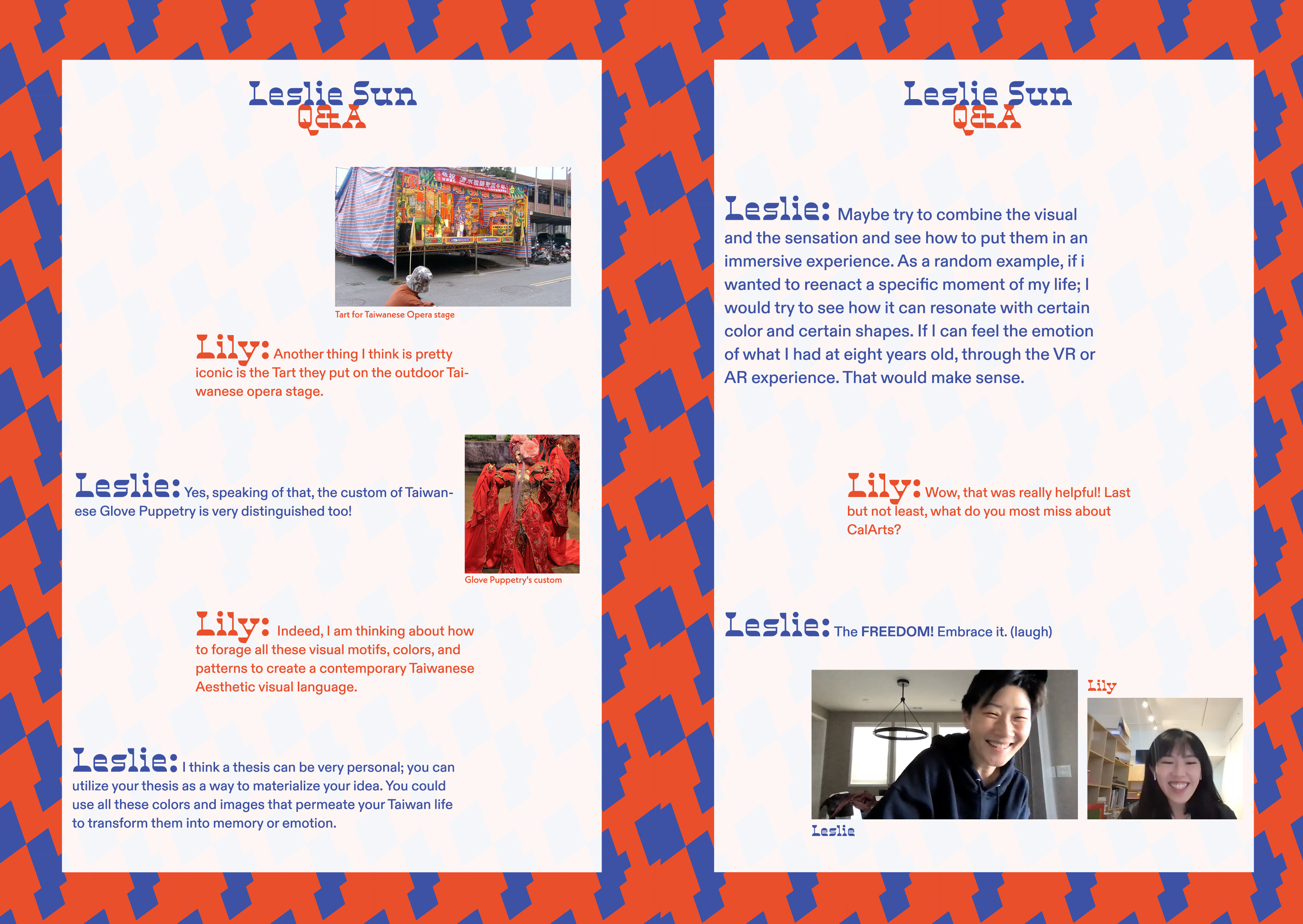
3.Tai-roglyohics:


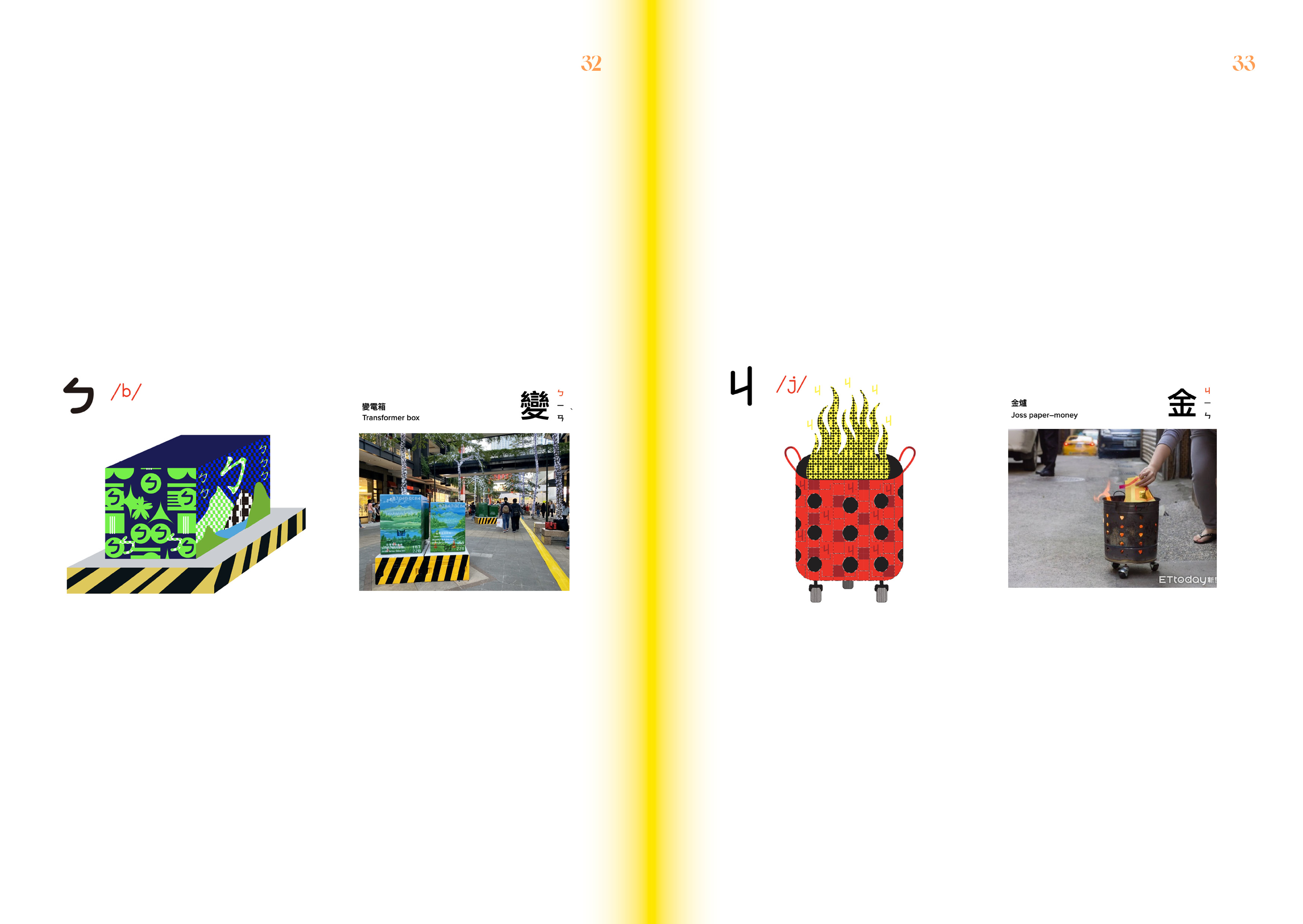
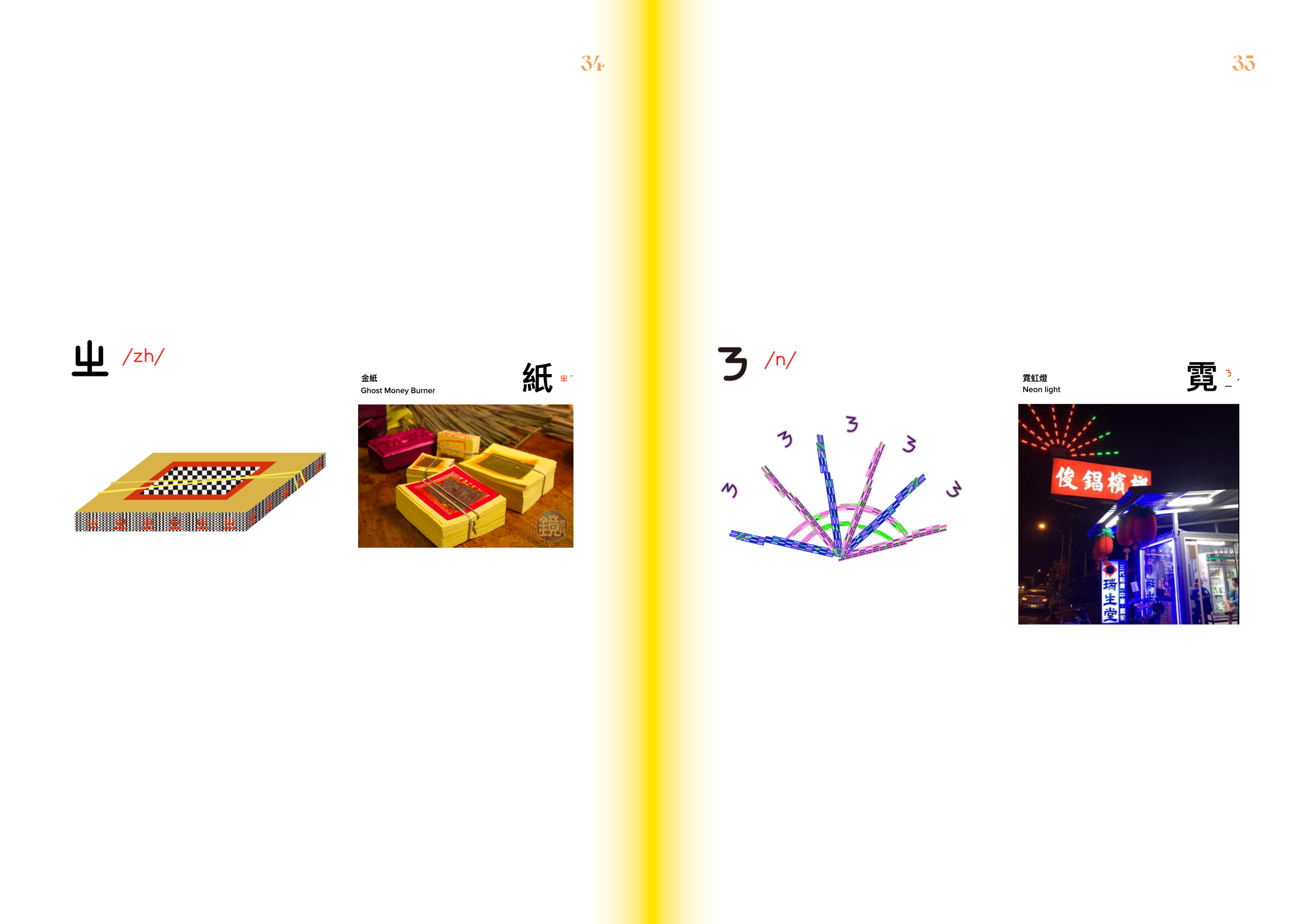




4. Kenmen Hype:



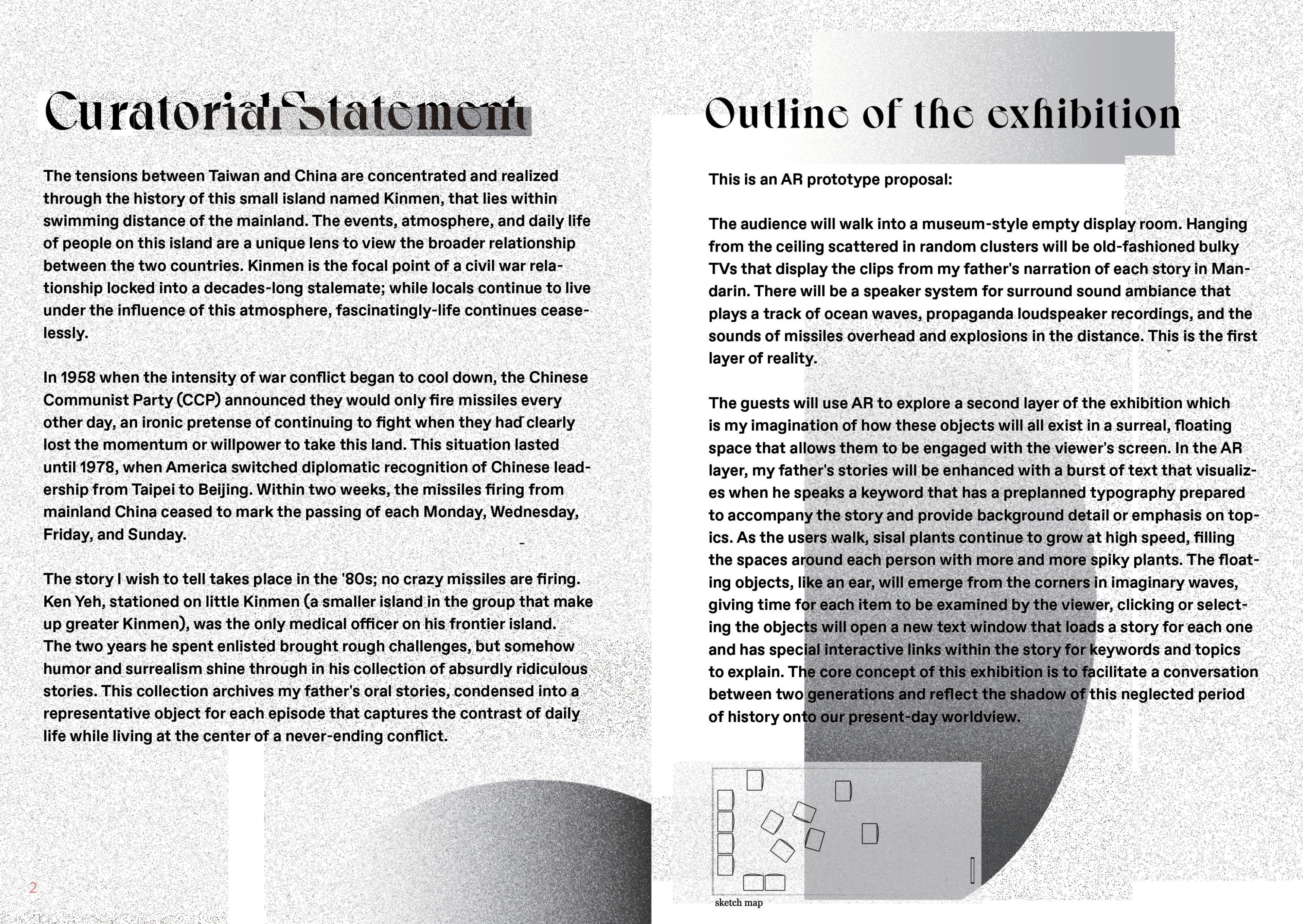

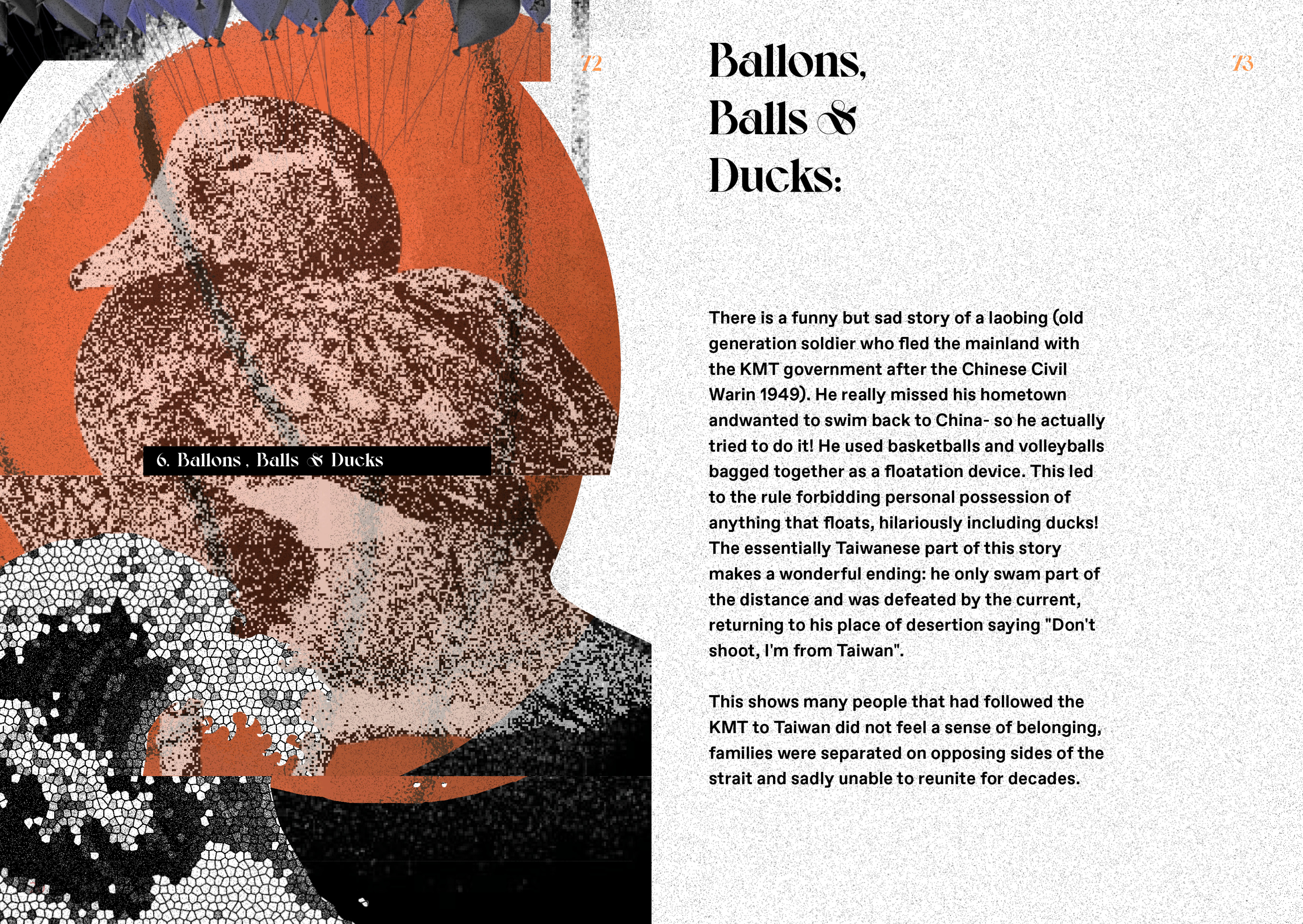
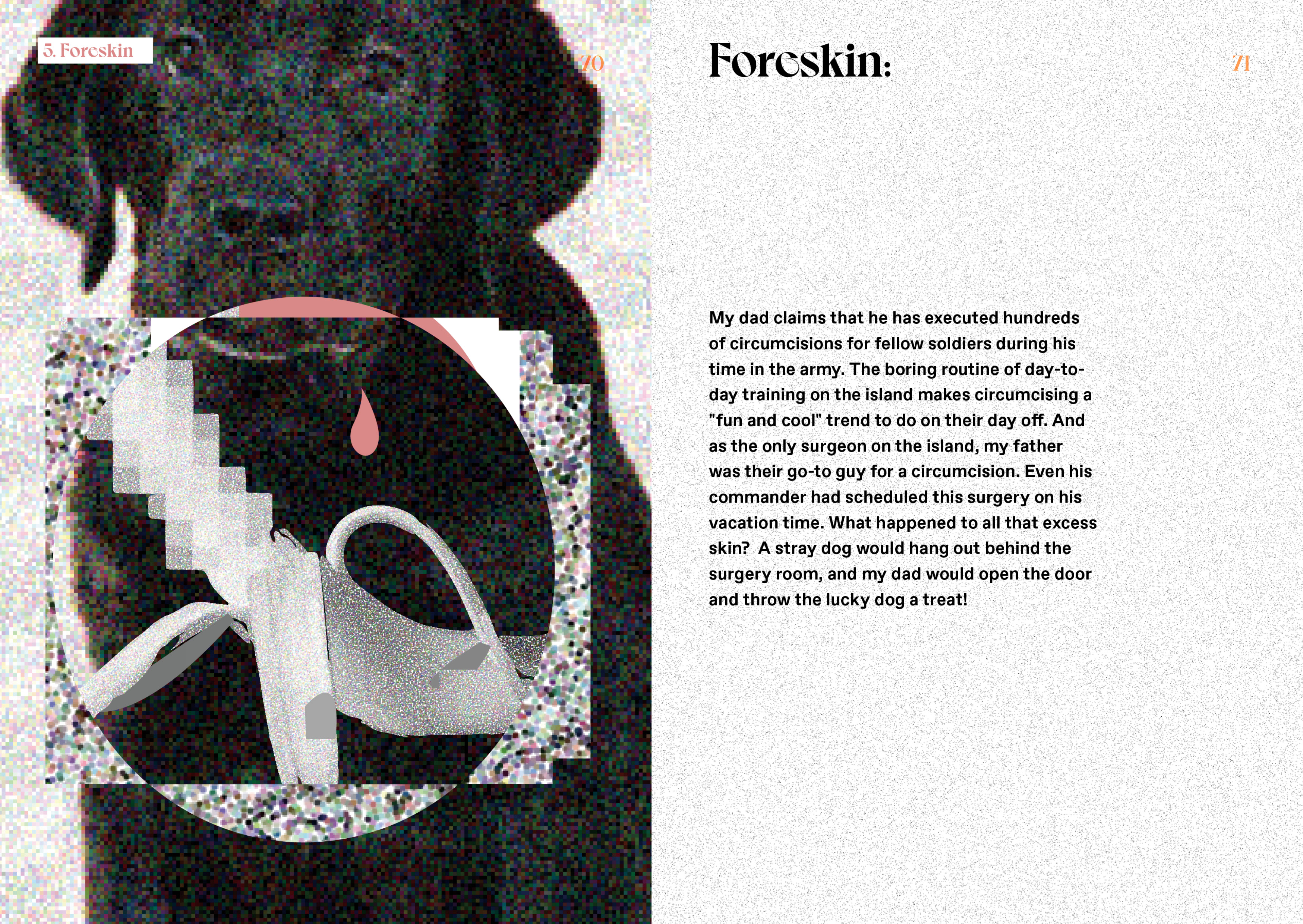


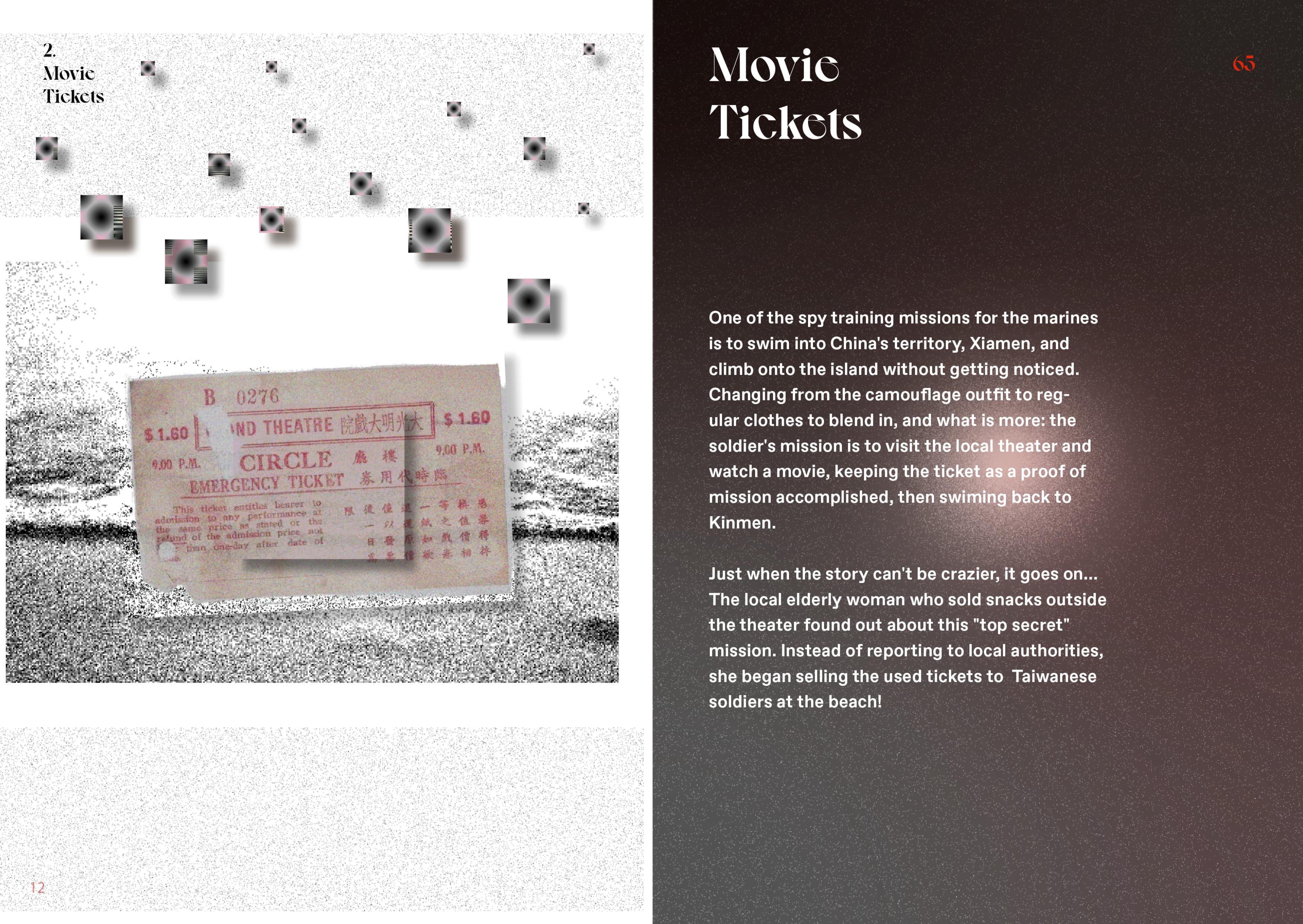
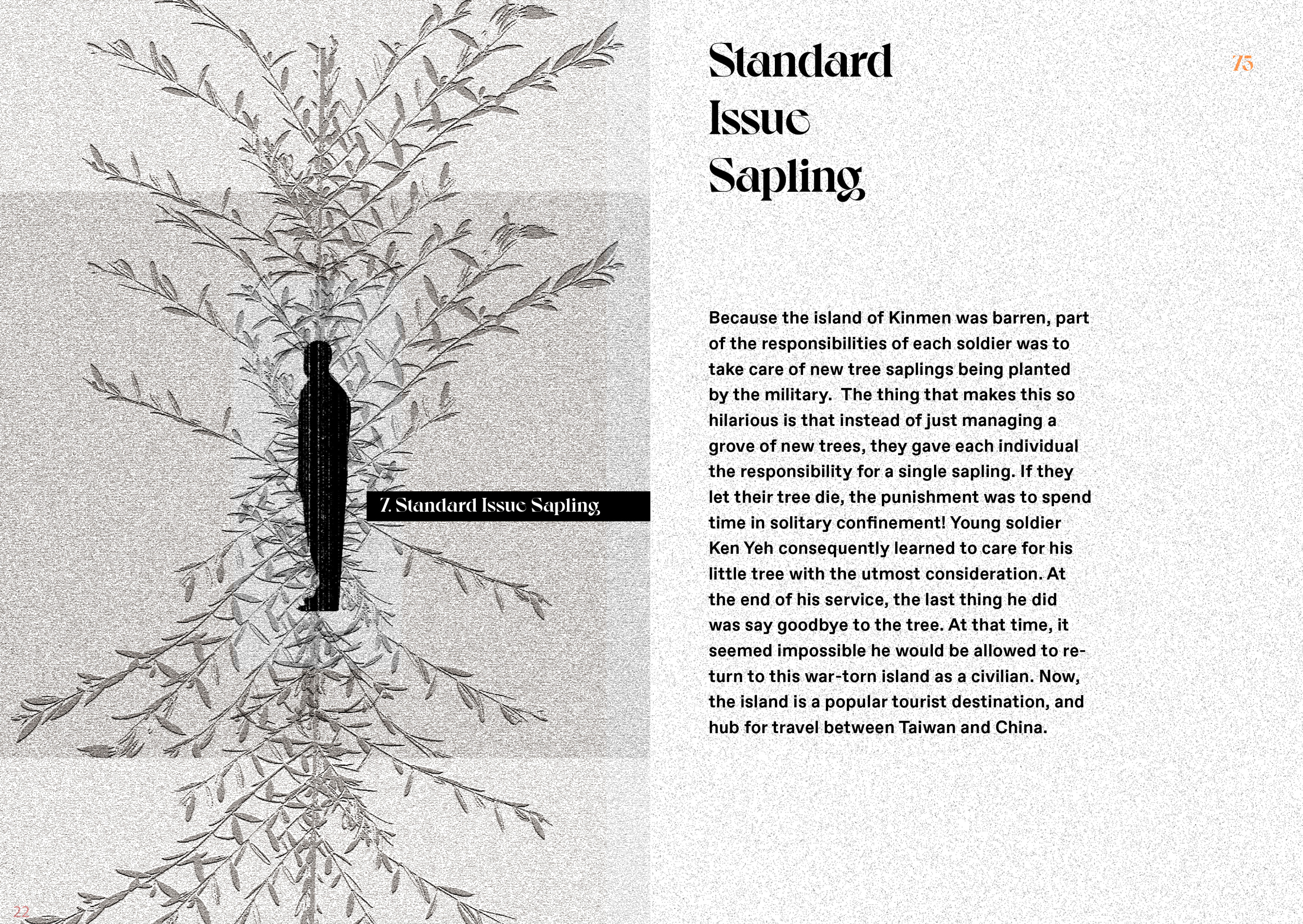







5.Bai-Bye:

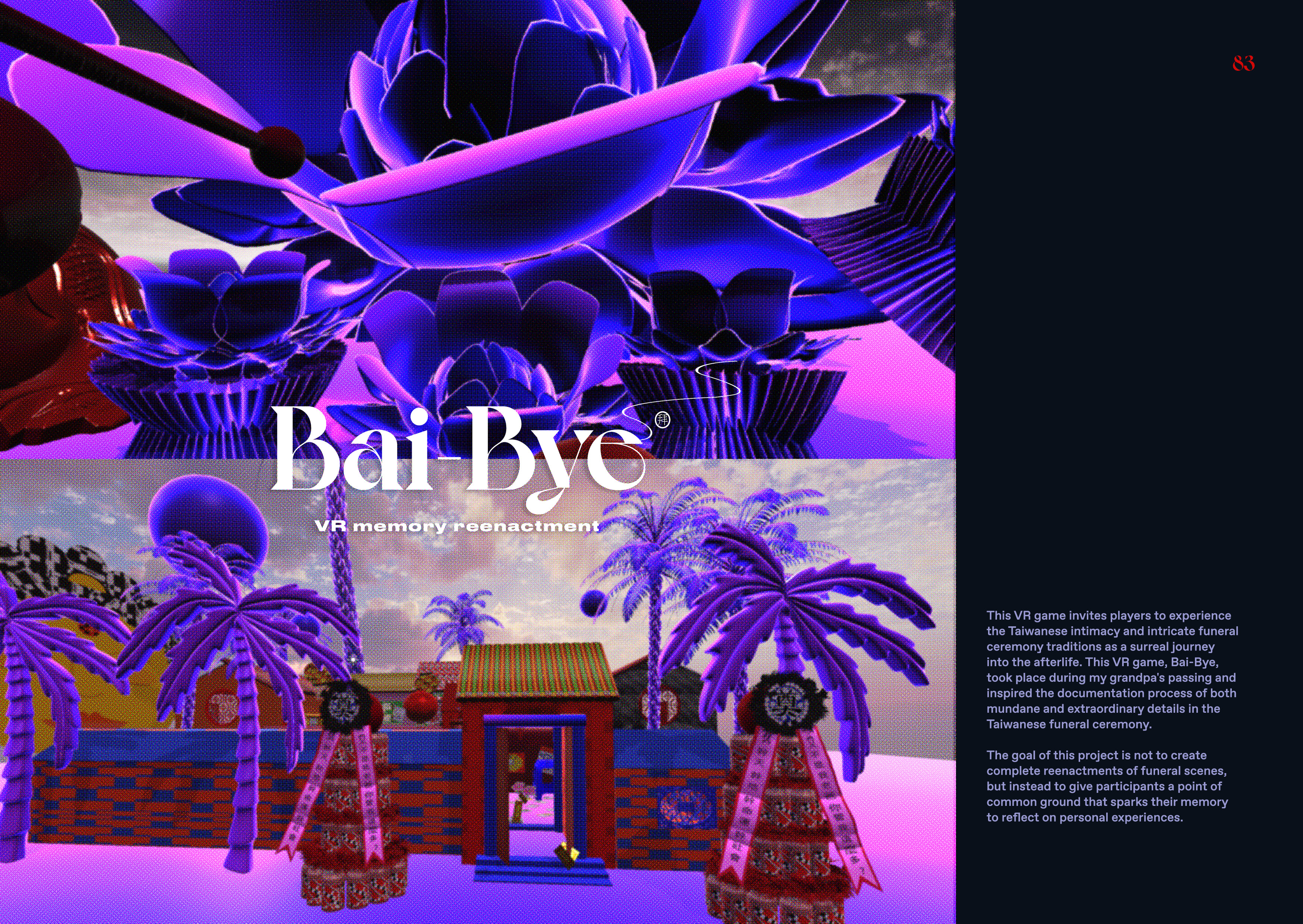

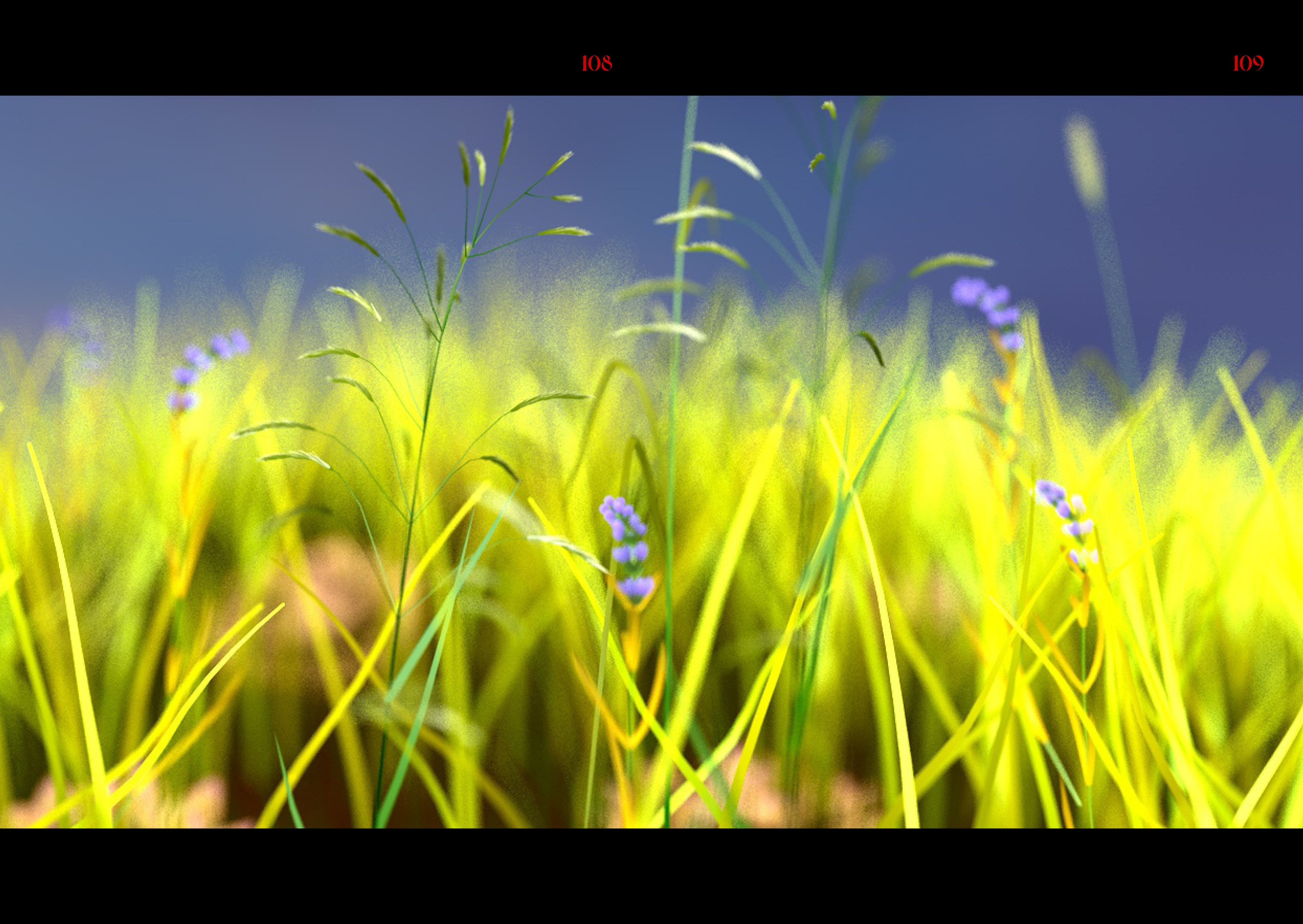
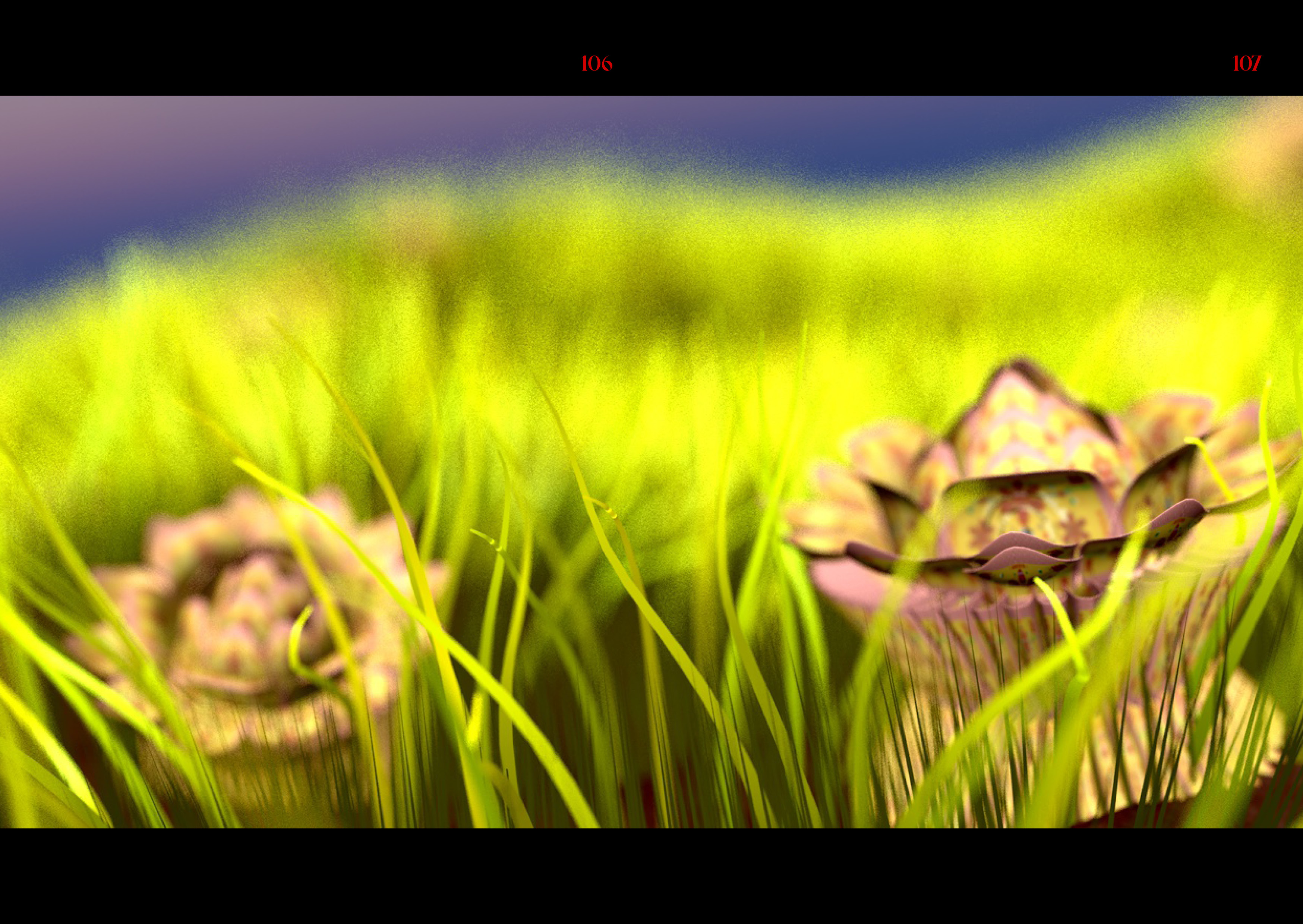



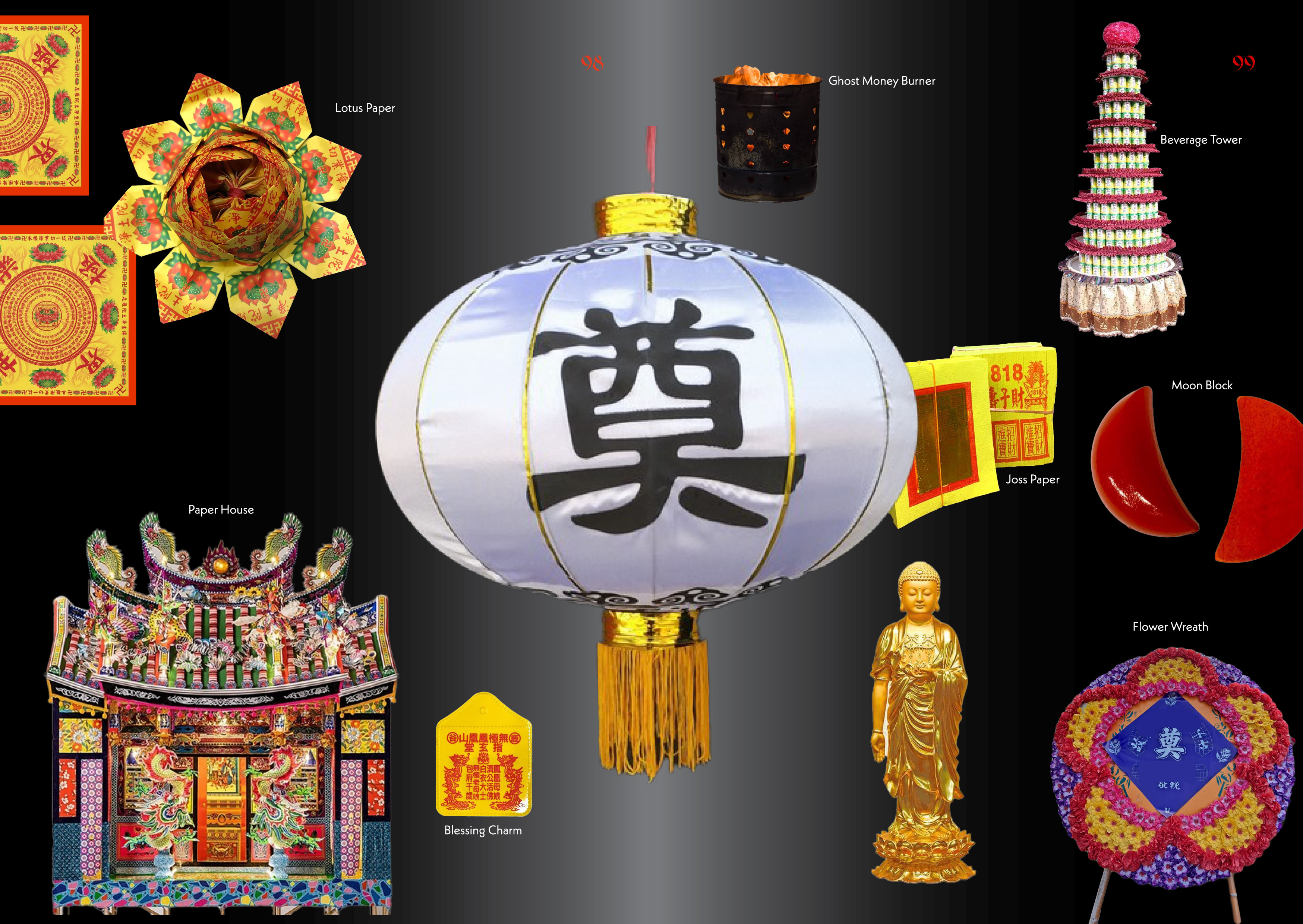
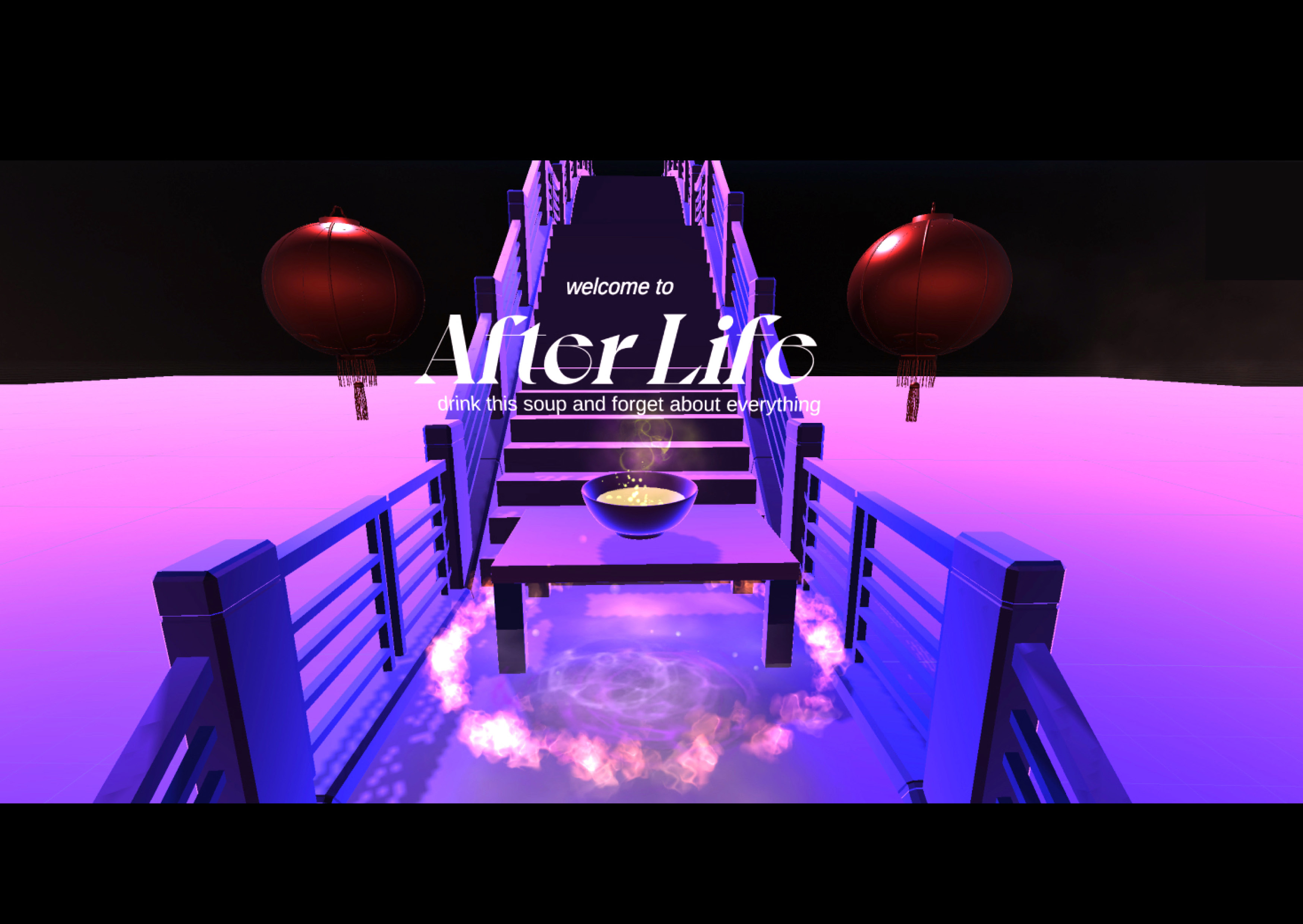







6. The Beauty of Mundane:


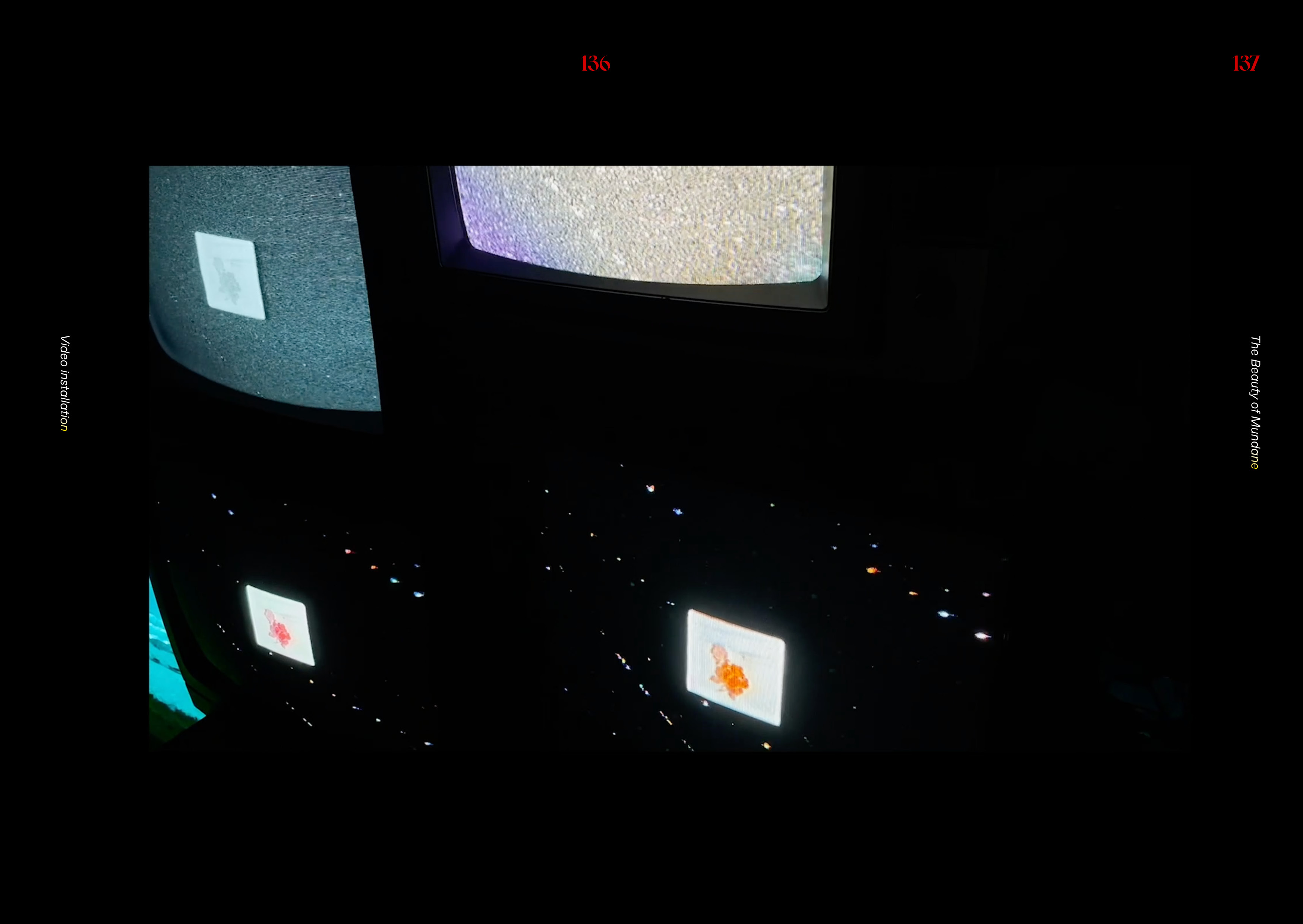
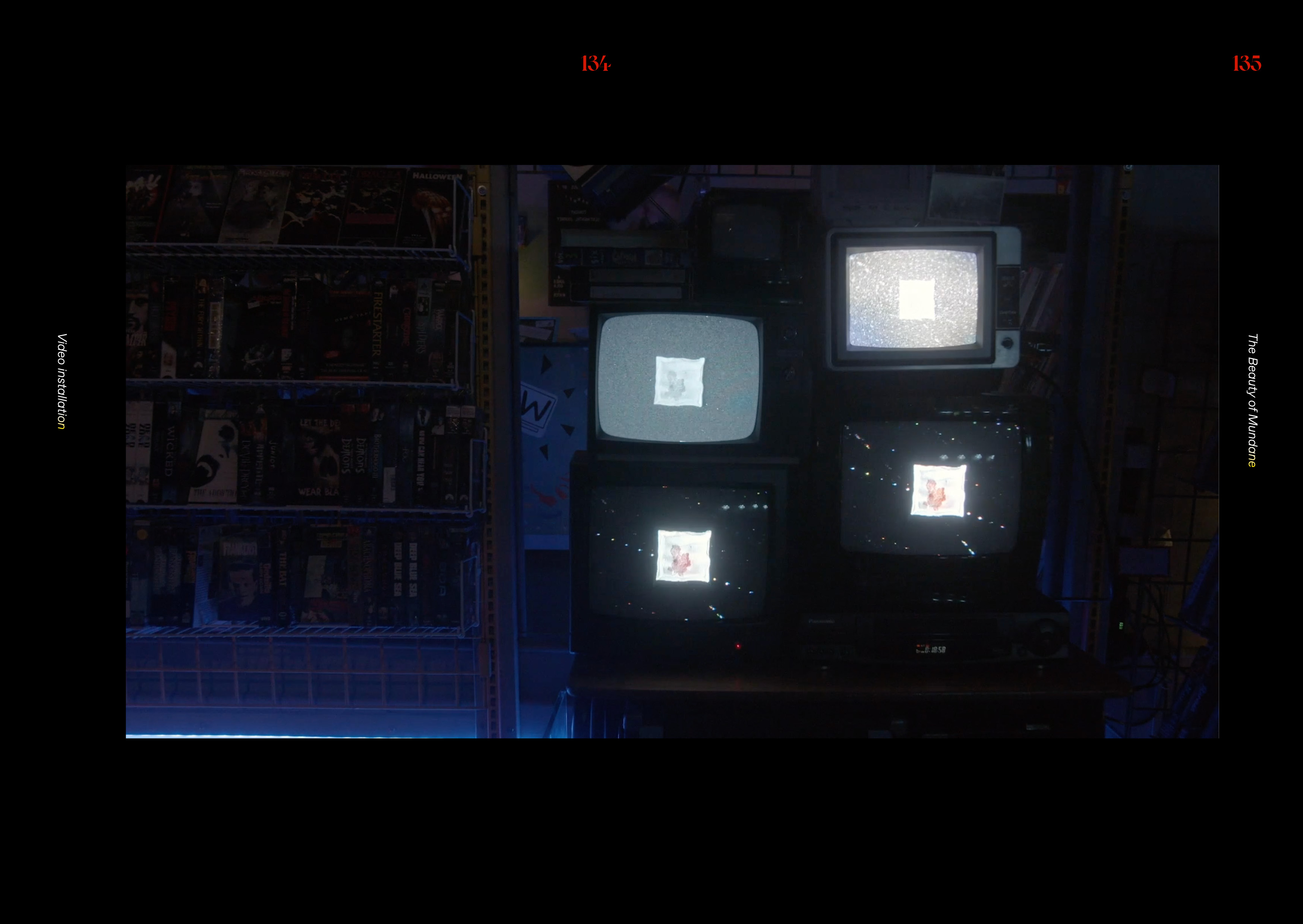







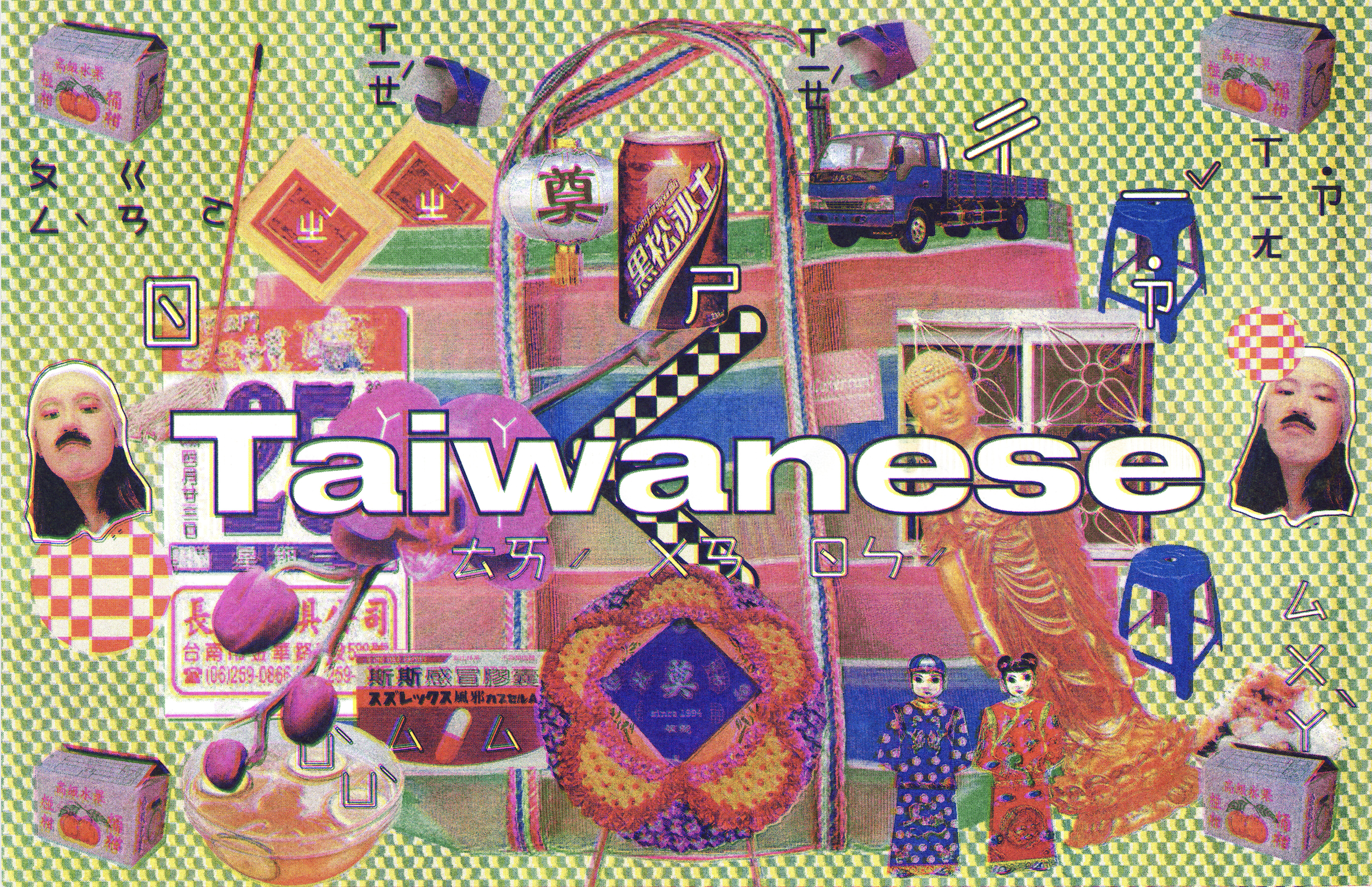







- How surrealism brings up the deepest, forgotten, hidden, most sincere thought with a philosophical, metaphoric way to communicate with people in an ambiguous, equivocal, provoking, arousing, visual approach. And how to embody it into my practice of work.
-
Digital Media- tools, technology, history of animation, AR recreating cultural copy-paste opportunities that can allow opportunities to relearn cultural stories and pieces in a digital world imposed over reality. Play around the power of culture hierarchy by transplanting the Taiwanese culture symbol into America, where the dominant culture export source is from. especially at the suburban, uniform, and tidy Santa Clarita Vally. The spiritual action of feeding the ghost offering food, burning the gold paper for your ancestor. convenience store in every block of the street, share bikes on the road, the pilgrimage...
-
Motion Graphic professional specialization- how to interact more with the user, triggered feedback to user inputs. Experimental animation in motion. How can motion graphics be a format for archival? Using motion to bring an ancient painting to life examples. Screen size limitation breaking- murals, scrolls, paintings, projections any direction and surface, never-ending timeline animation that sets the base for a long-term project to grow each time I collect and add a specimen to the endless collage of motion. I found my destiny.
-
Family storytelling project, knowing that the stories from a generation before are so comparatively intense, how do we respond and cope with current realities after learning the historic background of our identity. Interview project and start from family but expand to the older generation of designers to collect experiences that can be combined with audio and a graphic in the archive.
I'm investigating my own emotional and intuitive interpretation of Taiwanese identity through a set of design projects. My research project focusing on finding my ideatity as a Taiwanese designer, and exploring visual aesthetic of Taiwan, by studying historical, tecnological, cultural & religous traditions, augmented by my family member’s oral storytelling and mundane pieces of life.
I connect a set of values that I experienced first through my family - intimacy, timeliness, vulnerability, indivisibility - to the island where I grew up. I want to use design to consciously forage for my cultural roots...forming what I will call the Taiwan Gospel project - a series of projects practices that examine factors of geography, ideology, social behavior, and historical context that influence a Taiwan’sspecific place's visual development through in color palettes, patterns, and visual aesthetics. While some of my responses are based on direct experience, like the memory of oral stories I've listened to my father tell, others are based on my questions around a language I haven't fully learned or the complex funeral or wedding ceremonies that still confuse me, or the way that Taiwanese still practice fascinating, mysterious pilgrimage events. Using multimedia to investigate Taiwanese vernacular design, I will create immersive experiences to explore narratives from mundane family life to large cultural memories.
1.Memory
AR oral storytellingI first started exploring this wide topic of tackling the Taiwanese aesthetic by curating all the crazy oral stories my dad told and showcasing them into a surreal, fun, rich, imaginary AR exhibition. Just like visualizing the layers of my imagination after I heard all the stories from him, the audience will walk into a museum-style empty display room. Hanging from the ceiling scattered in random clusters will be old-fashioned bulky TVs that display the clips from my father's narration of each story in Mandarin. The guests will use AR to explore a second layer of the exhibition, which is my imagination of how these objects will all exist in a surreal, floating space that allows them to engage through the viewer's screen. In the AR layer, the stories enhance with a burst of text that visualizes when he speaks a keyword with preplanned typography prepared to accompany the story and provide background detail or emphasis on topics. The core concept of this exhibition is to facilitate a conversation between two generations and reflect the shadow of this neglected period of history onto our present-day worldview.
I am fascinated by how mundane objects emit the charm of surreal magic through the power of storytelling. The story I wish to tell is about when my father was stationed on the frontier island Kinmen in the 80s as their only medical officer. The events, atmosphere, and daily life of people on this island are a unique lens to view the broader relationship between the two countries. Kinmen is the focal point of a cold war relationship locked into a decades-long stalemate. At the same time, locals continue to live under the influence of this tense atmosphere, fascinatingly- life continues ceaselessly.
2. History
Decolonize design and generative design approachTo investigate the vernacular design of Taiwan, I also started looking at more general cultural assets to study. Since I have been practicing design, I have started to grow love all the nostalgic motifs, all the handwritten signs on an old street, the colorful tile that would appear in everyone's grandparent's bathtub, the intricate wrought-iron pattern in old homes, the packaging design of local medical remedies from my parent's pharmacy through my childhood... But I wondered, all those old patterns and colors that lived in daily Taiwanese life were mass-produced and standardized; where are the customized designs from the old-time? Then I discovered Taiwanese Majolica tile. I chose tile as the format for my second imagery exploration because it originates in Spain, which along with Holland, was Taiwan's oldest foreign colonial power. This art, also a technology, was not introduced in Taiwan until the Japanese imported them in 1915 during the middle of their time as colonial power leading my island. In Japan, these tiles are relatively cheap and put into bathrooms. Still, when imported, it was an expensive luxury, so local craftsmen would install them into prominent visual positions outside the home to display their wealth. This tile is one of the first transfers of skills from outside the country that became a well-known local art form, and that artistic development led to visual designs in Taiwanese of many unique graphics. The art and visual design of these tiles are intricate symbols of blessings that have images of special representative cultural icons such as peaches and bats. Taiwanese took these tiles and, empowered to craft them, transformed a relatively basic object or medium into an exquisitely beautiful part of life.
︎Taiwanese Mojolica reference ︎my AR iteration
So I took on the notion of how majolica tiles shine and tell stories for one's family. My version of the nowaday majolica tile has another layer of AR filter to explore. By scanning on the tile, you can see each story of the family members I portray. To do this experiment a little further, I expanded my redesignedre-designed version of the tile with the power of generative computer design. And somehow, the algorithm generates many similar patterns seen elsewhere in Taiwan! For example, windows made of textured floral glass and the temple's carved ceiling. It is beautiful to see how they share the same DNA of visual language while I deconstruct and reorganize them back together.
︎the algorithm generates many similar patterns seen elsewhere in Taiwan
2. Language
Vernacular design in languageI developed a visual communication tool called Tai-roglyphics to re-design a typeface based on Taiwanese vernacular graphics. Due to historical context, many Chinese traditions only remain practiced in Taiwan. Not only do we retain the traditional Chinese characters to write and read, but we also preserve the Chinese phonetic alphabet (Zhuyin) to help us learn the pronunciation of Chinese characters. There is an internet phenomenon where Taiwanese use our Zhuyin alphabet to leave political messages online to avoid cyberbullying. This work reflects the crisis of self-censorship we are facing. After interviewing a Taiwanese Calarts alumni who did an identity-related project, we all share the concern and fear of drawing attention from Chinese internet monitoring that discovers us as Taiwanese independence supporters. Anyone that makes any media in the Chinese language has to walk on eggshells around the topic of Taiwan. This project introduces a "tool” in the form of an encryption system. This typeface gives artists, designers, and anyone with primary education in Taiwan a mechanism to combat Chinese censorship. Exploring Taiwanese visual identity and local design vernacular is also an opportunity to revitalize modern design projects that draw from our heritage.
I want to design language in a pure visualization way. All the graphics to form this typeface are foraging the everyday mundane objects that permeate my life. Each illustration represents each phonetic alphabet, all related to its pronunciation.
( project working in progress )
3.Feeling
VR memory reenactment I am using design as a tool to communicate the collective memory of Taiwanese culture. Can the connotation of a specific color or shape give rise to our memory of the humid summer night market buzz? Can the motion of the light’s glow remind people of the ten days Mazu pilgrimage they walked along? Can a VR immersive experience let people understand the surreal charm and depth of our funeral ceremony?
This VR Dream funeral story took place during my grandpa's passing and inspired this documentation process of both mundane and extraordinary details in the Taiwanese funeral ceremony. The goal of this project is not to create complete reenactments of funeral scenes. Instead, it is to give participants a point of common ground that sparks their memory to reflect on personal experience.
Using my personal style of surrealism, I modified the design of traditional funeral cultural specimens to transform familiar objects into modern iterations. By tapping into cultural design color palettespalates and patterns, I am generating a collection of modern vernacular Taiwanese identity designs that structure my book: Taiwan Gospel.
(the original lotus paper)
(redesigned the lotus paper )
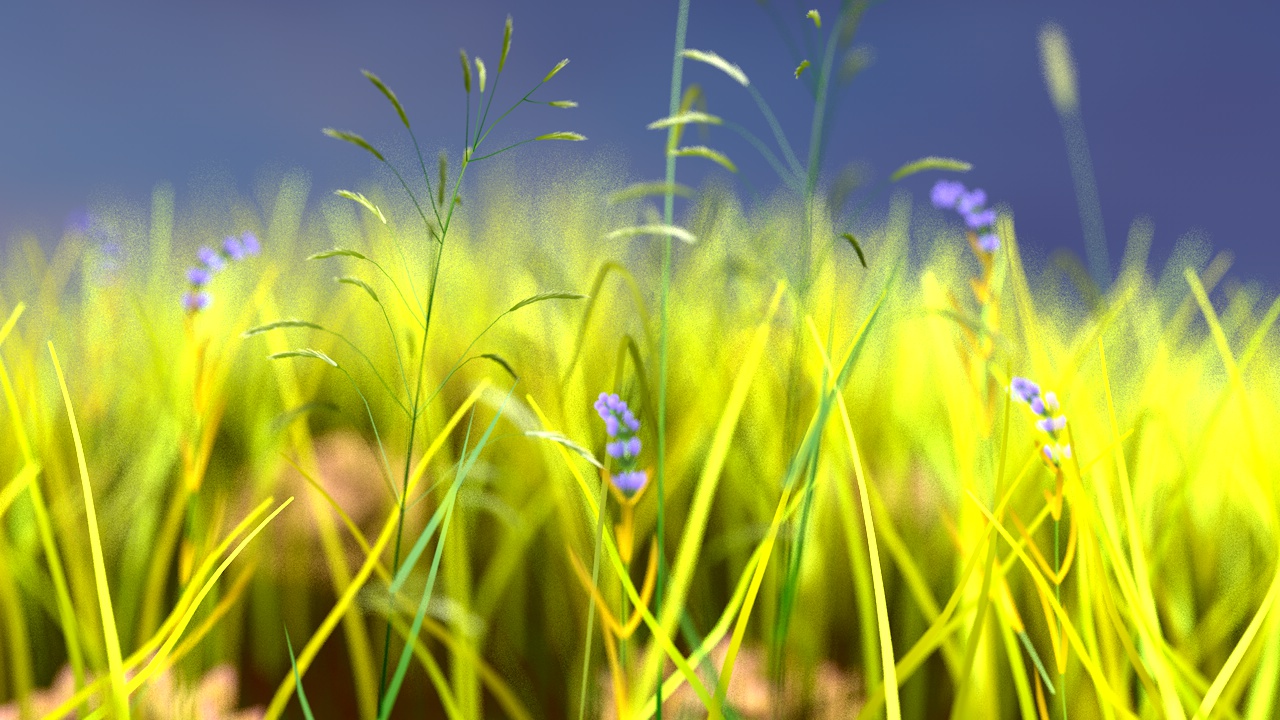
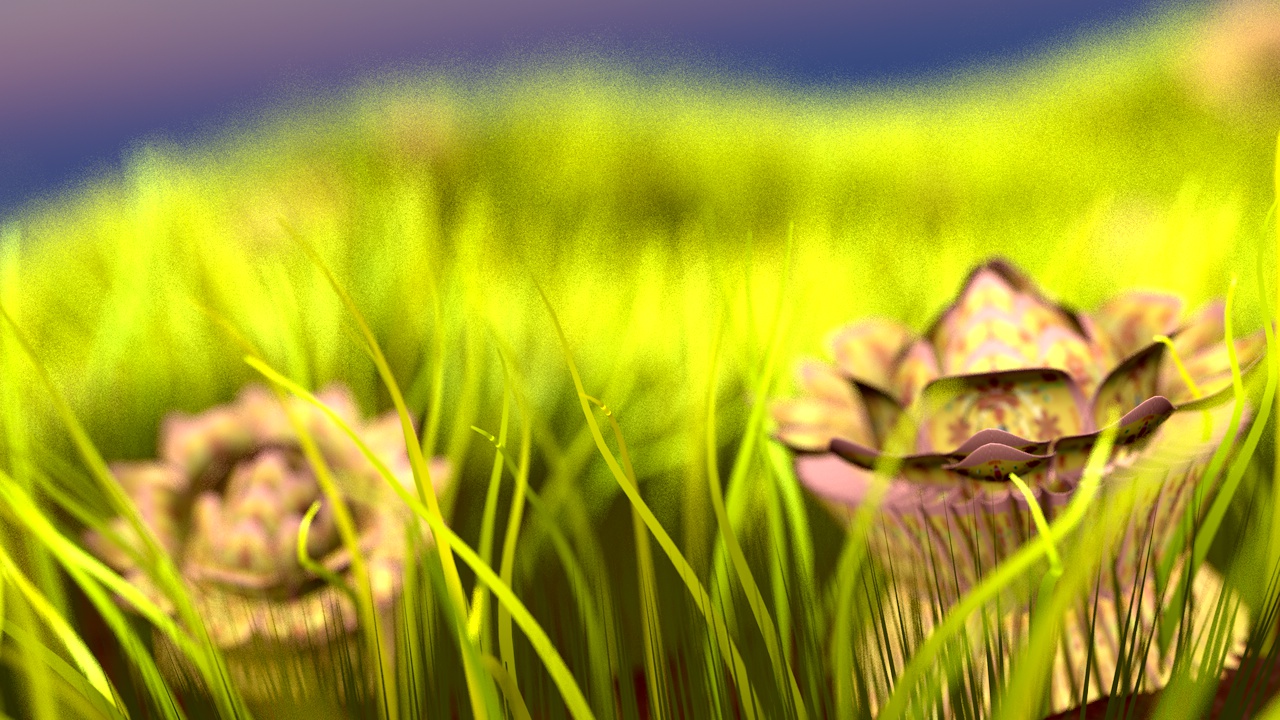
︎paper lotus flower in dream funeral style frame
The notion is to capture the beauty of the mundane in surreal visual language. Most importantly, to respond to the culture of the moment, giving my voice to the contemporary vernacular Taiwanese design.

